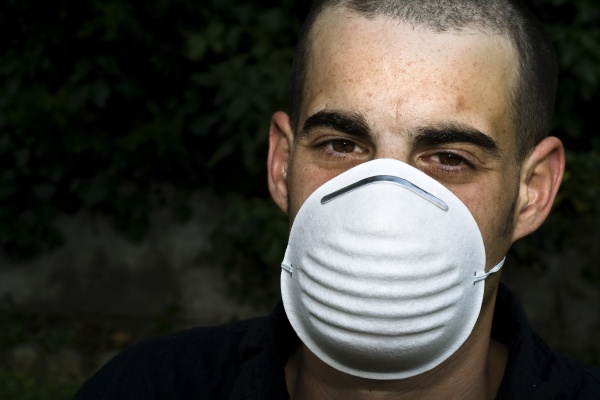Proper protection equipment is on the front lines of good construction practice. Getting a job done right, whatever the job, means completing it safely. When we look at safety, there are many avenues that come into play. Today let’s focus on respiratory protection. Our lungs are responsible for filtering the air that we breath in, and distributing oxygen throughout our body. But we need to help them too! Working in a dirty environment can expose our lungs to dirt, dust, bacteria, even harmful chemicals or mold. It’s important to know what environment you’ll be in, and how to properly prepare yourself with protection equipment.
Are Dusk Masks Enough?
 The answer is both a yes and a no: depending on the mask you have and the environment you’ll be working in. Dust masks come in many varieties, and choosing the wrong one can be a costly mistake. So how do you know which one to use and when? A rule of thumb to start with is to always purchase a mask with an N95 rating. This rating tells you that the filter will remove 95% of non oil-based particles from the air. For most home projects this will suit well, as it will keep dust out and prevent you from breathing in gusts of dirt. It will also protect against most allergens and a significant amount of airborne diseases. When working in your garage or shop, as long as you are not around dangerous chemicals, this mask will likely suffice. Are there cheaper alternatives? In direct comparison, no. However, a cheap, uncertified mask will protect against bugs and large debris such as wood shavings. It will not reduce filter out small particles though. Because of this, if you have any doubts, opt for a mask with a certification. The minimum of N95 is a great start. If you are working in an environment where you will face potential hazards or oil-based particles, consider a higher rating. R100 will filter out 100% of both oil-based and non oil-based particles up to eight hours P100 will filter the same beyond eight hours. If unsure, ask these questions: Will I be working around toxic particles? Am I going to be in an unfamiliar environment, where I may not know what is in the air? These will help you on your journey of choosing a mask.
The answer is both a yes and a no: depending on the mask you have and the environment you’ll be working in. Dust masks come in many varieties, and choosing the wrong one can be a costly mistake. So how do you know which one to use and when? A rule of thumb to start with is to always purchase a mask with an N95 rating. This rating tells you that the filter will remove 95% of non oil-based particles from the air. For most home projects this will suit well, as it will keep dust out and prevent you from breathing in gusts of dirt. It will also protect against most allergens and a significant amount of airborne diseases. When working in your garage or shop, as long as you are not around dangerous chemicals, this mask will likely suffice. Are there cheaper alternatives? In direct comparison, no. However, a cheap, uncertified mask will protect against bugs and large debris such as wood shavings. It will not reduce filter out small particles though. Because of this, if you have any doubts, opt for a mask with a certification. The minimum of N95 is a great start. If you are working in an environment where you will face potential hazards or oil-based particles, consider a higher rating. R100 will filter out 100% of both oil-based and non oil-based particles up to eight hours P100 will filter the same beyond eight hours. If unsure, ask these questions: Will I be working around toxic particles? Am I going to be in an unfamiliar environment, where I may not know what is in the air? These will help you on your journey of choosing a mask.
So You’ve Chosen a Mask: Now What?
Once you know which rating of mask you need, make sure you purchase one that fits. It’s important to have one that fits comfortably on your face. Any gaps will allow air to seep through and render the mask obsolete. You should also be able to breath easily through it. If a mask deprives you of oxygen or becomes clogged and hard to breath through, it poses a risk to your health. Choose a mask that is comfortable, fits snuggly, and allows you to breath easily. And remember to always follow instructions!
What to Watch For:
While working, there are signs to pay attention to, to ensure that your mask is still functioning as it’s suppose to. Notice scents. Is there a change in smells around you? If so, it may be a sign that particles are leaking through. Any discomfort or irritation in your throat, nose, or lungs should create an immediate red flag. Notice also the humidity. Respirators need to remain dry to function properly. If your masks becomes wet, it’s time to replace.
Whether you’re working with drywall at home, painting, doing woodwork in your shop, or working in your garage, consider the health of your lungs and implement good safety techniques. A respirator or dust mask can be a small investment that your lungs will thank you for later! At responsible contractors we aim to bring you the best in construction. If you have a project that is over your head or safety concerns, consider hiring one of our trusted professional to get the job done for you! See more here: http://responsiblecontractors.com/
No comments:
Post a Comment